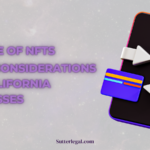Table of Contents
- Introduction
- Employee Retention Bonus activities:
- Examples of companies that implemented ERB programs
- Conclusion
Introduction
Mergers and acquisitions (M&A) often bring about significant changes and uncertainties for employees.
Amidst these transitions, one crucial aspect that requires careful consideration is the retention of employee bonuses.
Employee Retaining especially the key talent and ensuring their motivation and loyalty is crucial to the success of any M&A.
In this blog post, we will explore strategies and best practices for effectively managing employee bonuses during M&A to maximize retention and maintain a positive work culture.
it is important to design an ERB program that is fair, transparent, and aligned with the company’s goals and values. In this article, we will discuss some strategies for designing an effective ERB program during M&A activities.
Employee Retention Bonus activities:
1- Transparent Communication
Clear and transparent communication is essential throughout the M&A process.
Employees should be kept informed about any changes to the bonus structure, timing, and criteria.
By openly discussing the rationale behind bonus adjustments or modifications, management can minimize uncertainties and build trust among employees, increasing the likelihood of bonus retention.
2- Align Bonus Structures
Align Bonus Structures: During M&A, companies often have different bonus structures and philosophies.
It is important to align these structures to create a unified and fair bonus system.
Conduct a thorough analysis of the existing bonus plans in both organizations and identify the best practices that can be combined to create a new bonus structure that is equitable and rewards performance consistently across the merged entity.
3- Retain Key Performance Metrics
To maintain continuity and fairness, it is crucial to retain key performance metrics used to determine employee bonuses.
Review the performance evaluation processes of both companies and identify the metrics that have proven to be effective in driving success.
By preserving these metrics, employees can continue to understand how their performance contributes to the bonus calculation, thereby retaining their motivation and commitment.
4- Retention Agreements
In cases where the M&A poses a risk of key talent departure, retention agreements can be a useful tool.
These agreements offer financial incentives to key employees, such as retention bonuses, stock options, or other long-term incentives, tied to specific milestones or tenure.
Retention agreements provide employees with reassurance, incentivize their commitment, and reduce the likelihood of losing critical talent during the transition.
5- Employee Engagement Programs
Engagement programs play a vital role in maintaining morale and productivity during times of change.
Offer programs that emphasize employee development, recognition, and involvement in decision-making processes.
By focusing on employee engagement, companies can foster a sense of ownership and loyalty, mitigating the potential negative impact of M&A on employee morale and bonus retention.
6- Cultural Integration
Successful M&A is not just about integrating systems and processes but also about integrating cultures. A strong and inclusive organizational culture can significantly contribute to employee satisfaction and loyalty. Companies should invest in cultural integration initiatives that help employees from both organizations feel connected, valued, and aligned with the newly formed entity’s values and goals. A positive cultural environment can foster employee loyalty and improve bonus retention.
Examples of companies that implemented ERB programs
- Microsoft: In 2016, Microsoft acquired LinkedIn for $26.2 billion. As part of the deal, Microsoft offered retention bonuses to LinkedIn employees to encourage them to stay with the company. The bonus was tied to performance and was paid out over a two-year period. The program was successful in retaining key employees, and LinkedIn has continued to grow under Microsoft’s ownership.
- Verizon: In 2013, Verizon acquired Vodafone’s stake in Verizon Wireless for $130 billion. As part of the deal, Verizon offered retention bonuses to key employees to encourage them to stay with the company. The bonus was tied to performance and was paid out over a two-year period. The program was successful in retaining key employees and helped to ensure a smooth transition after the acquisition.
- Amazon: In 2017, Amazon acquired Whole Foods Market for $13.7 billion. As part of the deal, Amazon offered retention bonuses to Whole Foods employees to encourage them to stay with the company. The bonus was tied to performance and was paid out over a two-year period. The program was successful in retaining key employees, and Whole Foods has continued to operate as a separate entity under Amazon’s ownership.
- Cisco: In 2013, Cisco acquired Sourcefire for $2.7 billion. As part of the deal, Cisco offered retention bonuses to key employees to encourage them to stay with the company. The bonus was tied to performance and was paid out over a four-year period. The program was successful in retaining key employees, and Sourcefire has continued to operate as a separate entity under Cisco’s ownership.
Conclusion
Retaining employee bonuses during M&A is critical to preserving talent and maintaining a positive work environment.
By implementing transparent communication, aligning bonus structures, retaining key performance metrics, utilizing retention agreements, focusing on employee engagement programs, and promoting cultural integration, companies can enhance their chances of successfully navigating the complexities of M&A while keeping their employees motivated and loyal.
Prioritizing bonus retention strategies will not only benefit the individuals involved but also contribute to the overall success of the merged entity.
If you have a question about how to structure an M&A retention bonus or if you have any questions about how to interpret your bonus please contact an experienced employment or M&A attorney at Sutter Law for a free consultation.






